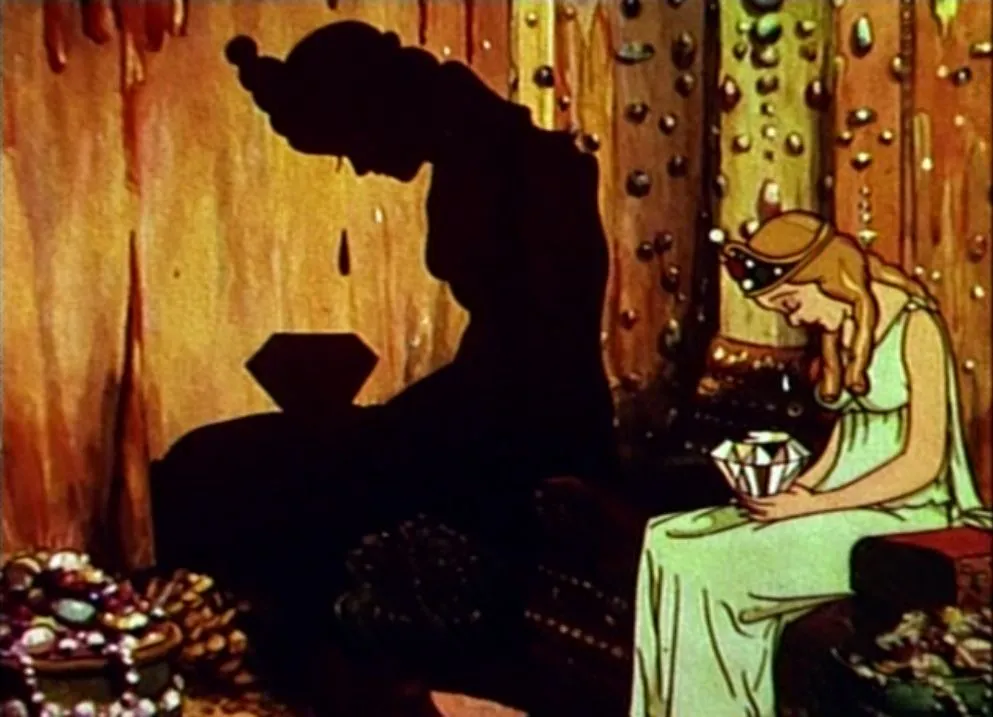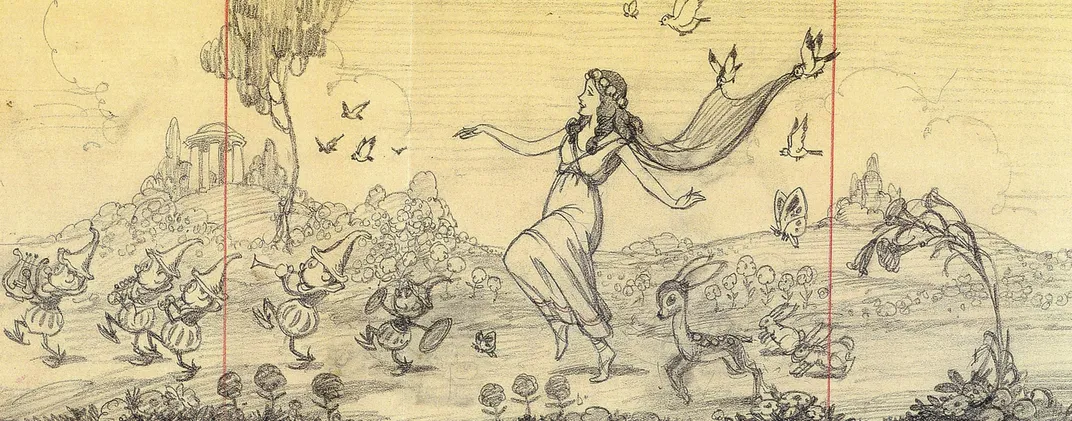Snow White Wasn’t the First Disney Princess
Dwarfs, meet Persephone
Once upon a time, in February 1938, Walt Disney unleashed a phenomenon when Snow White and the Seven Dwarfs, the first full-length cel-animated feature film, debuted in theaters all over the United States. The movie broke box office records, and sparked an animation empire, anchored primarily on Disney’s signature bevy of princesses. But though Snow White was Disney’s first full-length movie princess, she wasn’t the first Disney princess.
That honor goes to Persephone, the main character of a 1937 Silly Symphonies short that served as a sort of test run for Snow White. The film, "The Goddess of Spring," features Disney’s first realistic maiden twirling and flitting through an idyllic spring world, accompanied by dancing, dwarf-like figures, birds and fairies. Things take a scary turn when a singing Pluto (no, not that Pluto), the god of the underworld, snatches Persephone and drags her to a jazzy, fiery hell. Spoiler alert: The spring maiden works things out with Hades and agrees to spend half the year with him.
Alyssa Carnahan, open studio coordinator at the Walt Disney Family Museum, writes that the project was a chance for Disney’s animators to work on bringing a human character to life. The studio had focused primarily on wacky animals, though early silent shorts featured a real-life girl with long curls named Alice. As they worked on Persephone’s princess-like look and action, animators also developed standards like the model sheet, which allows cel animators to keep character attributes consistent throughout the film.
A look at Persephone shows plenty of similarities to Snow White, from her habit of holding her skirt and twirling, to her proclivity for adorable animals and diminutive people. Persephone might be a goddess, but she’s also the daughter of Zeus and thus a princess, as well—one who exhibits the same characteristics of curiosity, peril and redemption that her later sisters will mirror.
"The Goddess of Spring" wasn’t Walt Disney Picture’s last foray into Greek mythology or myth-inspired animation (hello, Fantasia), but it’s worth noting that animators used this myth to practice for their famous retellings of European-style fairy tales in the tradition of the Brothers Grimm and Charles Perrault. Given recent research that shows that both types of tales could share common roots, perhaps it's no surprise that the spring maiden who launched an entire genre of movies was not German or French, but rather Greek.
/https://tf-cmsv2-smithsonianmag-media.s3.amazonaws.com/accounts/headshot/erin.png)


/https://tf-cmsv2-smithsonianmag-media.s3.amazonaws.com/accounts/headshot/erin.png)